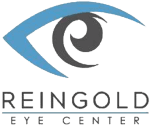Cataract Surgery Experts
A cataract is a clouding that develops in the crystalline lens of the eye and obstructs the passage of light. A cataract can vary from slight to complete opacity and, in the early stages of its development, may be corrected with glasses or a change in prescription. As the cataract grows, it can begin to affect your lifestyle and may need to be removed. Cataracts are a sign of growing old, but they do not have to affect your quality of life. Continue reading to learn more about advanced cataract surgery.
How can I become less dependent on glasses and contact lenses after cataract surgery with a new intraocular lens implant?
We offer laser assisted cataract surgery (femtolaser) in addition to premium intraocular lenses to pursue your visual goals. Here are just a few examples:
ASTIGMATISM MANAGING, TORIC INTRAOCULAR LENS
Cataracts occur when proteins build up in your eye's natural lens, causing cloudy vision and making everyday tasks, like driving, using a computer, or recognizing familiar faces, more difficult. Astigmatism is a separate, common eye condition that happens when the cornea's surface has an uneven curvature, resembling a football rather than a basketball. This irregularity results in blurred vision at all distances and challenges in seeing fine details. By choosing a toric intraocular lens, you can effectively address the vision problems caused by cataracts and astigmatism simultaneously.
EXTENDED DEPTH OF FIELD INTRAOCULAR LENS (EDOF, Vivity)
Extended Depth of Focus intraocular lens is a type of lens that is used to replace the natural lens of the eye during cataract surgery. This type of lens is designed to provide a continuous range of vision from far to intermediate with functional near vision, reducing the need for glasses or contact lenses. EDOF lenses work by creating a gentle blending of the light that enters the eye. EDOF lenses are a great option for people who want to reduce their dependence on glasses or contact lenses after cataract surgery.
TRIFOCAL INTRAOCULAR LENS (Panoptics)
A trifocal lens is a type of intraocular lens that is used to replace the natural lens of the eye during cataract surgery. Like a trifocal eyeglass lens, a trifocal lens contains three different prescriptions in one lens, allowing the patient to see clearly at far, intermediate, and near distances reducing, or sometimes eliminating, the need for glasses or contacts. Trifocal lenses are a relatively new technology and considered an advanced lens type. They are typically more expensive than other types of intraocular lenses. As with any medical procedure, it is important to consult with an ophthalmologist to determine whether a trifocal lens is the right choice for your specific needs.
